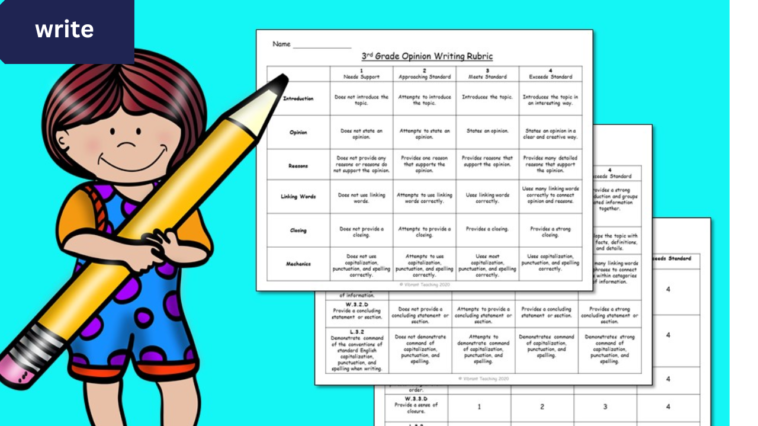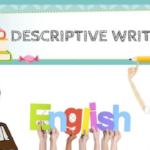Writing rubrics are essential tools for assessing students’ writing skills effectively. They provide clear criteria for evaluation, ensuring consistency and fairness in grading. Different types of rubrics serve different purposes, helping educators assess writing holistically or through specific components. This article explores three major types of writing rubrics: holistic, analytic, and single-point rubrics, discussing their characteristics, advantages, and applications.
Holistic Rubric
A. Definition and Characteristics
A holistic rubric evaluates a student’s writing as a whole rather than breaking it down into individual components. The rubric consists of predefined levels of performance, each describing the overall quality of writing.
B. When to Use a Holistic Rubric
Holistic rubrics are ideal for:
- Quick assessments of writing assignments
- Large-scale evaluations where efficiency is needed
- Assessing overall proficiency rather than specific skills
C. Advantages and Disadvantages
Advantages:
- Saves time in grading
- Provides a clear overall assessment
- Encourages students to focus on the big picture
Disadvantages:
- Lacks detailed feedback on specific areas
- Can be subjective due to broad criteria
D. Example of a Holistic Rubric
| Score | Description |
|---|---|
| 5 | Exemplary writing with clear organization, strong vocabulary, and minimal errors. |
| 4 | Good writing with minor weaknesses in clarity or mechanics. |
| 3 | Adequate writing with noticeable issues in organization and grammar. |
| 2 | Below-average writing with major errors affecting readability. |
| 1 | Poorly structured writing with numerous grammatical mistakes. |
Analytic Rubric
A. Definition and Characteristics
An analytic rubric breaks writing into specific components such as organization, grammar, vocabulary, and coherence. Each component is scored separately, providing a detailed assessment.
B. When to Use an Analytic Rubric
Analytic rubrics are best suited for:
- Detailed feedback and targeted instruction
- Assessing multiple aspects of writing
- Helping students understand strengths and weaknesses
C. Advantages and Disadvantages
Advantages:
- Provides specific feedback for improvement
- Reduces subjectivity in grading
- Encourages a more structured approach to writing
Disadvantages:
- Time-consuming to score
- Can be overwhelming for students if too detailed
D. Example of an Analytic Rubric
| Criteria | 4 – Excellent | 3 – Good | 2 – Needs Improvement | 1 – Poor |
| Organization | Well-structured, logical flow | Mostly organized, minor lapses | Some organization, but lacks clarity | Disorganized, lacks coherence |
| Grammar | Few or no errors | Minor errors, not distracting | Noticeable errors affecting readability | Frequent errors, hard to understand |
| Vocabulary | Varied and precise | Some variety, appropriate use | Limited vocabulary, some misuse | Very basic, frequent misuse |
Single-Point Rubric
A. Definition and Characteristics
A single-point rubric provides one column of proficiency criteria, allowing space for personalized feedback on areas of improvement and strengths.
B. When to Use a Single-Point Rubric
Single-point rubrics work well for:
- Formative assessments and revisions
- Encouraging personalized feedback
- Engaging students in self-assessment
C. Advantages and Disadvantages
Advantages:
- Offers flexible and individualized feedback
- Less intimidating than analytic rubrics
- Encourages student reflection
Disadvantages:
- Requires more time for written feedback
- Less structured than analytic rubrics
Related Article : How to writing Paper Ideas and Examples
D. Example of a Single-Point Rubric
| Criteria | Areas for Improvement | Proficient | Areas of Strength |
| Organization | Needs better transitions | Logical structure | Strong flow and clarity |
| Grammar | Some grammar errors | Mostly error-free | Excellent grammatical control |
| Vocabulary | Lacks variety | Sufficient word choice | Rich and precise vocabulary |
Choosing the Right Rubric for Assessment
A. Factors to Consider
- Purpose of the assessment: Holistic rubrics for quick grading, analytic rubrics for detailed feedback, single-point rubrics for growth-oriented feedback.
- Complexity of the writing task: More complex tasks may benefit from analytic rubrics.
- Student needs and learning goals: Consider which rubric supports student improvement most effectively.
B. Comparing the Three Types of Rubrics
| Rubric Type | Best For | Pros | Cons |
| Holistic | Quick grading, general proficiency | Fast, simple, big-picture focus | Lacks detailed feedback |
| Analytic | Detailed feedback, structured writing | Clear evaluation of multiple areas | Time-consuming |
| Single-Point | Growth-focused feedback, revisions | Personalized, flexible, student-centered | Requires detailed comments |
C. Adapting Rubrics for Different Writing Assignments
Educators can modify rubrics based on the writing task, learning objectives, and students’ proficiency levels to maximize effectiveness.
Conclusion
Writing rubrics play a crucial role in assessing and improving students’ writing skills. Holistic rubrics provide quick assessments, analytic rubrics offer detailed feedback, and single-point rubrics encourage personalized growth. Choosing the right rubric depends on the goals of the assessment and the needs of the students. By using and adapting rubrics effectively, educators can enhance the writing evaluation process and foster student success in writing.
FAQs
1. What is the best type of rubric for quick grading?
A holistic rubric is best for quick grading as it assesses the overall quality of writing rather than breaking it down into individual components.
2. Which rubric provides the most detailed feedback?
An analytic rubric provides the most detailed feedback since it assesses multiple aspects of writing separately.
3. When should I use a single-point rubric?
A single-point rubric is ideal for formative assessments, personalized feedback, and encouraging student self-reflection.
4. Can rubrics be modified for different assignments?
Yes, rubrics should be adapted based on the complexity of the writing task and the learning objectives.
5. How can I make grading more efficient while still providing feedback?
Using a combination of holistic and single-point rubrics can balance efficiency and detailed feedback.


